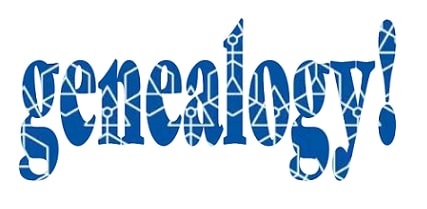Introduction: In this article, Jessica Edwards describes two activities to get the whole family involved in exploring and documenting your family history. Jessica has had a lifelong interest in her family’s history – especially on her father’s side, which goes back to the first settlers in Pennsylvania, Jamestown and New England.
Genealogy can be a family activity as well as a pursuit done by just one person. Below are two activities that can be done as a family so that everyone can learn about who they are, where they came from, etc., as all of this plays a part in who each of us are and who we become.
Activity 1: A Family Timeline
When we chart history, we often use a timeline. A timeline helps us see when events happened in a country’s history – or a person’s life. With the help of your family, create a timeline for your own family’s life.
When I did this with my students, I got a big roll of “butcher paper” (a large roll of white or off-white paper usually available at a local arts & craft store). I told them it can take any form and they could be as artistic as they wanted – but should include major events (like learning to ride a bike, moving to another state or house, the birth of a sibling, or a favorite Christmas), dates, and places. It should also record a description of the event, their age at the time it happened, and whatever proof they have verifying the event occurred.
Now take the information on each individual timeline and make a larger one that uses the information from everyone in the family to make your family’s timeline. After you are done with the descriptions, times, etc., decorate it as a family (you could draw, cut out pictures from a magazine, print copies of photos to show the events, or anything else you can think of).
Your ancestors also had birthdays, holidays, and school days. They did many of the same things you do. Later in their lives, they married and had children. Some of them hunted for gold, others worked in mills, still others left their homelands to make a new life in America. If you had to prove your ancestors had these experiences – that they actually lived – how would you do it?
Well, you would become a family history detective. You would look for clues to their lives in the things they left behind. You’d use records, photographs, witnesses, artifacts – anything you could get your hands on that would tell you more about them. While there are many sources that can tell you more about how a person lived or where an event happened, one of the most helpful sources is records. Records are simply written details about a life event. But records are fragile. Do you know where your birth certificate is? What about your first-grade report card?
Later, choose one ancestor that you have some information about (events in their life) and make a timeline for them and teach your family about that ancestor. Try to find out things about them like music they may have listened to, places they would have visited, etc. Every so often repeat this activity but choose different relatives each time (maybe from a different generation).
Activity 2: Have a Family History Detective Party
Play detective at home by looking for clues to your family’s history. Assign each family member (or team up family members) a room of the home (or several rooms) to see if they can find anything that has names of family members on it, and dates or places where members of the family lived or worked. Have the person or team gather the items into a large box and set a time limit. When the time limit is up, everyone returns to the agreed upon place and takes turns sharing what was found. After the item has been discussed, place it back in the box until photos have been taken, measurements made, etc., and logged into a notebook so that you can use the information in researching your family’s genealogy (you can even decorate the box if you’d like).
Use caution, as many of these items may be old and delicate. Touch old photos on the edges only. Be careful when handling old books or papers. If your parents or relatives are worried about your handling these items, ask them to look at the items with you and help you write down the names, dates and places you find. Don’t be alarmed if you don’t find many of these items. A lot of families move and lose important things. It may be that your relatives have records and artifacts in their own homes that would be helpful to you.
Good luck, and have fun with these family genealogy activities!

